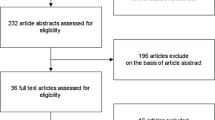Abstract
The unique capabilities of mobile, context-aware, networked devices make them an interesting platform for applying suggestion in persuasive technologies. Because these devices are nearly always with their owners, can sense relevant information about the context of their use, and nearly always have network access, they enable the principle of kairos, providing the right information at the best time. Relatively little work has examined providing opportunistic, right-time, right-place suggestions or notifications that encourage people to change their behavior. This paper first discusses some of the challenges facing designers incorporating suggestions into their persuasive technologies. We then review a set of relevant persuasive technologies, focusing primarily on technologies in the health domain. We then identify a design space that represents tactics for building persuasive technologies, particularly suggestion technologies. We then explore how this design space of suggestion tactics can be used to evaluate, compare, and inform the design of new persuasive technologies.
Preview
Unable to display preview. Download preview PDF.
Similar content being viewed by others
References
Bickmore, T., Picard, R.: Establishing and Maintaining Long-Term Human Computer Relationships. ACM Transactions on Human-Computer Interaction 12(2), 293–327 (2005)
Fogarty, J., Hudson, S.E., Atkeson, C.G., Avrahami, D., Forlizzi, J., Kiesler, S., Lee, J.C., Yang, J.: Predicting human interruptibility with sensors. ACM Trans. Comput.-Hum. Interact. 12(1), 119–146 (2005)
Fogg, B.J.: Persuasive Technology: Using Computers to Change What We Think and Do. Morgan Kaufmann Publishers, San Francisco (2003)
Khaled, R., Barr, P., Noble, J., Biddle, R., Fischer, R.: Our Place or Mine?: Exploration into Collectivism-Focused Persuasive Technology Design. In: IJsselsteijn, W., de Kort, Y., Midden, C., Eggen, B., van den Hoven, E. (eds.) PERSUASIVE 2006. LNCS, vol. 3962, Springer, Heidelberg (2006)
Mazzotta, I., de Rosis, F.: Artifices for persuading to improve eating habits. In: AAAI Spring Symposium on ”Argumentation for consumers of health care”, Stanford (March 2006)
Nawyn, J., Intille, S., Larson, K.: Embedding Behavior Modification Strategies into a Consumer Electronic Device: A Case Study. In: 8th International Conference on Ubiquitous Computing, Orange County, USA (September 2006)
Oliver, N., Flores-Mangas, F.: MPTrain: a mobile, music and physiology-based personal trainer. In: MobileHCI 2006. Proceedings of the 8th Conference on Human-Computer interaction with Mobile Devices and Services, Helsinki, Finland, September 12-15, 2006, vol. 159, pp. 21–28. ACM Press, New York, NY (2006)
Nike+iPod, http://www.nikeplus.com
World Health Organization, “Obesity and Overweight,” Chronic Disease Information Sheet, http://www.who.int/dietphysicalactivity/publications/facts/obesity/en/index.html
Author information
Authors and Affiliations
Editor information
Rights and permissions
Copyright information
© 2007 Springer-Verlag Berlin Heidelberg
About this paper
Cite this paper
Andrew, A., Borriello, G., Fogarty, J. (2007). Toward a Systematic Understanding of Suggestion Tactics in Persuasive Technologies. In: de Kort, Y., IJsselsteijn, W., Midden, C., Eggen, B., Fogg, B.J. (eds) Persuasive Technology. PERSUASIVE 2007. Lecture Notes in Computer Science, vol 4744. Springer, Berlin, Heidelberg. https://doi.org/10.1007/978-3-540-77006-0_32
Download citation
DOI: https://doi.org/10.1007/978-3-540-77006-0_32
Publisher Name: Springer, Berlin, Heidelberg
Print ISBN: 978-3-540-77005-3
Online ISBN: 978-3-540-77006-0
eBook Packages: Computer ScienceComputer Science (R0)




